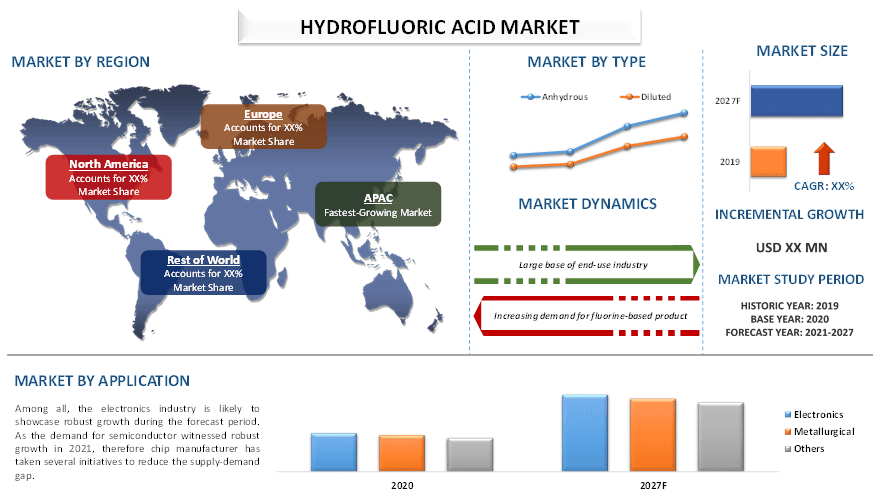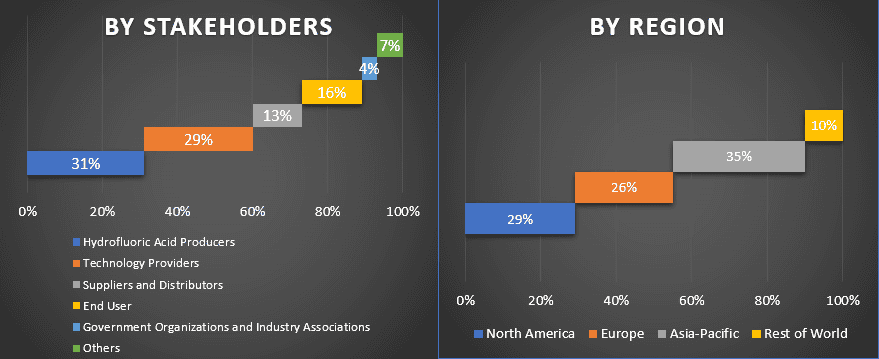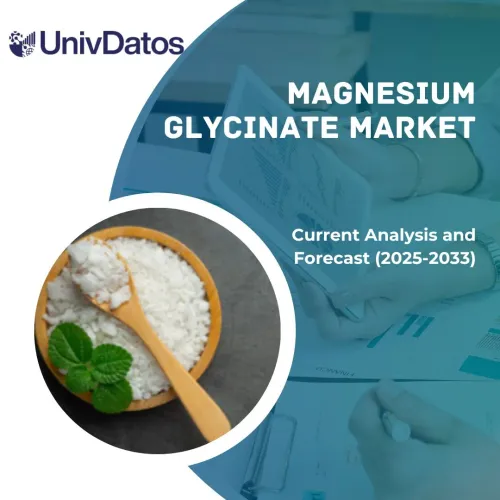- Inicio
- Acerca de nosotros
- Industria
- Servicios
- Leyendo
- Contáctenos
Mercado del ácido fluorhídrico: Análisis actual y pronóstico (2021-2027)
Énfasis en el tipo (anhidro y diluido); aplicación (electrónica, metalúrgica, vidrio, polímero, agroquímica, farmacéutica, petroquímica y otros); y región y país

SOLICITAR PDF DE MUESTRA GRATUITO
Es probable que el mercado mundial del ácido fluorhídrico muestre un crecimiento de alrededor del 5% durante el período de pronóstico. El ácido fluorhídrico, independientemente de su naturaleza corrosiva, se utiliza en una amplia gama de industrias debido a sus características que le dan ventaja sobre otros. La electrónica, la metalurgia, el vidrio, los polímeros, los agroquímicos, los productos farmacéuticos y los productos petroquímicos, entre otros, son algunas de las industrias más destacadas donde se utiliza el ácido fluorhídrico. El ácido fluorhídrico no es un producto de consumo final; por lo tanto, su dinámica de mercado depende principalmente del desempeño de las industrias antes mencionadas. A lo largo de los años, la capacidad de producción de estas industrias ha ido aumentando debido al crecimiento demográfico, el aumento de los ingresos y las políticas de apoyo, por nombrar algunos, lo que ha aumentado la demanda de materias primas utilizadas en la fabricación de productos finales. Esto a su vez aumenta la demanda de ácido fluorhídrico. Por ejemplo, el ácido fluorhídrico se utiliza en productos farmacéuticos que contienen flúor, por lo tanto, como el mercado farmacéutico mundial aumentó de $879 mil millones en 2011 a alrededor de $1,571 mil millones en 2020, también aumentó la demanda de compuestos o materias primas utilizadas en el proceso de fabricación.
Perspectivas presentadas en el informe
“Entre los tipos, el ácido fluorhídrico anhidro tuvo una participación destacada en el mercado en 2020”
Según el tipo, el mercado se clasifica en ácido fluorhídrico anhidro y diluido. De ambos, el ácido fluorhídrico anhidro capturó una parte considerable del mercado debido a su uso en una gran cantidad de áreas de aplicación. Se utiliza en la producción de microchips, agentes de limpieza para circuitos electrónicos, limpieza de metales, pretratamiento y tratamiento, esmerilado y grabado de vidrio, aire acondicionado, refrigeradores, extintores de incendios, producción de productos químicos inorgánicos, medicamentos, pesticidas, tetrafluoruro de uranio y hexafluoruro.
“Entre las aplicaciones, es probable que el segmento de la electrónica muestre un crecimiento significativo durante el período de pronóstico”
Según la aplicación, el mercado se clasifica en electrónica, metalurgia, vidrio, polímeros, agroquímicos, productos farmacéuticos, petroquímicos y otros. Entre todos, es probable que la industria electrónica muestre un crecimiento sólido durante el período de pronóstico. Como la demanda de semiconductores experimentó un sólido crecimiento en 2021, el fabricante de chips ha tomado varias iniciativas para reducir la brecha entre la oferta y la demanda. Por ejemplo, en 2022, Intel Corporation anunció planes para una inversión inicial de más de $20 mil millones en la construcción de dos nuevas fábricas de chips en Ohio, EE. UU.. Esto a su vez impulsaría la demanda de ácido fluorhídrico.
“Asia-Pacífico representó una parte considerable en el mercado mundial del ácido fluorhídrico”
Para una mejor comprensión de la adopción en el mercado del ácido fluorhídrico, el mercado se analiza en función de su presencia mundial en países como América del Norte (Estados Unidos, Canadá, resto de América del Norte), Europa (Alemania, Reino Unido, Francia, Italia, España y resto de Europa), Asia-Pacífico (China, Japón, India, Australia y resto de APAC) y el resto del mundo. Asia-Pacífico representó una parte importante del mercado y se espera que muestre un crecimiento sustancial durante el período de pronóstico debido a una base grande y creciente de la industria de uso final debido a la mejora del poder adquisitivo del consumidor, la rápida urbanización y la creciente demanda de productos de mejor calidad. Además, el cambio industrial en la región desde las economías occidentales ha aumentado la demanda de ácido fluorhídrico en la región.
Razones para comprar este informe:
- El estudio incluye el tamaño del mercado y el análisis de pronóstico validado por expertos clave autenticados de la industria
- El informe presenta una revisión rápida del desempeño general de la industria de un vistazo
- El informe cubre un análisis en profundidad de los pares prominentes de la industria con un enfoque principal en las finanzas comerciales clave, la cartera de productos, las estrategias de expansión y los desarrollos recientes
- Examen detallado de los impulsores, las restricciones, las tendencias clave y las oportunidades que prevalecen en la industria
- El estudio cubre de manera integral el mercado en diferentes segmentos
- Análisis profundo a nivel de país de la industria
Opciones de personalización:
El mercado mundial de ácido fluorhídrico se puede personalizar aún más según los requisitos o cualquier otro segmento de mercado. Además de esto, UMI entiende que puede tener sus propias necesidades comerciales, por lo tanto, no dude en conectarse con nosotros para obtener un informe que se adapte completamente a sus necesidades.
Tabla de contenido
Para analizar el mercado histórico, la estimación del mercado actual y la previsión del mercado futuro del ácido fluorhídrico, se llevan a cabo tres pasos principales para crear y analizar su adopción en todo el mundo. Se llevó a cabo una exhaustiva investigación secundaria para recopilar las cifras históricas del mercado y estimar el tamaño actual del mercado. En segundo lugar, para validar estas perspectivas, se tuvieron en cuenta numerosos hallazgos y supuestos. Además, también se realizaron exhaustivas entrevistas primarias con expertos de la industria a lo largo de la cadena de valor de la industria del ácido fluorhídrico. Tras la suposición y validación de las cifras del mercado a través de entrevistas primarias, empleamos un enfoque ascendente para pronosticar el tamaño completo del mercado. Posteriormente, se adoptaron métodos de desglose del mercado y triangulación de datos para estimar y analizar el tamaño del mercado de los segmentos y subsegmentos de la industria a la que pertenece. La metodología detallada se explica a continuación:
Buscar más detalles sobre la metodología de investigación
Análisis del tamaño del mercado histórico
Paso 1: Estudio en profundidad de fuentes secundarias:
Se realizó un estudio secundario detallado para obtener el tamaño histórico del mercado de ácido fluorhídrico a través de fuentes internas de la empresa, como informes anuales y estados financieros, presentaciones de rendimiento, comunicados de prensa, etc., y fuentes externas, incluidos revistas, noticias y artículos, publicaciones gubernamentales, publicaciones de la competencia, informes del sector, bases de datos de terceros y otras publicaciones creíbles.
Paso 2: Segmentación del mercado:
Después de obtener el tamaño histórico del mercado de ácido fluorhídrico, realizamos un análisis secundario detallado para recopilar información y compartir el mercado actual para diferentes segmentos y subsegmentos para las principales regiones. El segmento principal se incluye en el informe por tipo y aplicación. Además, se realizaron análisis regionales y a nivel de país para evaluar la adopción general de ácido fluorhídrico a nivel mundial.
Paso 3: Análisis de factores:
Después de adquirir el tamaño histórico del mercado de diferentes segmentos y subsegmentos, realizamos un análisis de factores detallado para estimar el tamaño actual del mercado de ácido fluorhídrico. Además, realizamos un análisis de factores utilizando variables dependientes e independientes, como el aumento de la demanda de la industria de uso final y el aumento de la capacidad de fabricación de semiconductores. Se realizó un análisis exhaustivo de los escenarios de oferta y demanda teniendo en cuenta el aumento de la inversión, las principales asociaciones, las fusiones y adquisiciones, la expansión empresarial y los lanzamientos de productos en la industria del ácido fluorhídrico.
Estimación y previsión del tamaño del mercado actual
Tamaño actual del mercado: Basándonos en información práctica de los 3 pasos anteriores, llegamos al tamaño actual del mercado, los actores clave en el mercado mundial de ácido fluorhídrico y las cuotas de mercado de cada segmento. Todos los porcentajes de participación requeridos y los desgloses del mercado se determinaron utilizando el enfoque secundario mencionado anteriormente y se verificaron a través de entrevistas primarias.
Estimación y previsión: Para la estimación y previsión del mercado, se asignaron ponderaciones a diferentes factores, incluidos los impulsores y las tendencias, las restricciones y las oportunidades disponibles para las partes interesadas. Después de analizar estos factores, se aplicaron técnicas de previsión relevantes, es decir, el enfoque ascendente, para llegar a la previsión del mercado hasta 2027 para diferentes segmentos y subsegmentos en las principales regiones a nivel mundial. La metodología de investigación adoptada para estimar el tamaño del mercado abarca:
- El tamaño del mercado de la industria, en términos de valor (US$) y la tasa de adopción de ácido fluorhídrico en los principales mercados
- Todos los porcentajes de participación, divisiones y desgloses de los segmentos y subsegmentos del mercado
- Actores clave en el mercado del ácido fluorhídrico. Además, las estrategias de crecimiento adoptadas por estos actores para competir en el mercado de rápido crecimiento.
Validación del tamaño y la cuota de mercado
Investigación primaria: Se realizaron entrevistas en profundidad con los líderes de opinión clave (KOL), incluidos los ejecutivos de alto nivel (CXO/VP, jefe de ventas, jefe de marketing, jefe de operaciones, jefe regional, jefe de país, etc.) en las principales regiones. Los resultados de la investigación primaria se resumieron y se realizó un análisis estadístico para demostrar la hipótesis establecida. Las aportaciones de la investigación primaria se consolidaron con los resultados secundarios, convirtiendo así la información en conocimientos prácticos.
División de los participantes primarios por partes interesadas y regiones

Ingeniería de mercado
Se empleó la técnica de triangulación de datos para completar la estimación general del mercado y para llegar a cifras estadísticas precisas para cada segmento y subsegmento del mercado mundial de ácido fluorhídrico. Los datos se dividieron en varios segmentos y subsegmentos después de estudiar varios parámetros y tendencias en el área de tipo y aplicación.
El principal objetivo del estudio del mercado de ácido fluorhídrico
Las tendencias actuales y futuras del mercado mundial de ácido fluorhídrico se identificaron en el estudio. Los inversores pueden obtener información estratégica para basar su criterio para las inversiones en el análisis cualitativo y cuantitativo realizado en el estudio. Las tendencias actuales y futuras del mercado determinarían el atractivo general del mercado a nivel de país, proporcionando una plataforma para que el participante industrial explote el mercado sin explotar para beneficiarse como una ventaja de ser el primero en actuar. Otros objetivos cuantitativos de los estudios incluyen:
- Analizar el tamaño actual y previsto del mercado de ácido fluorhídrico en términos de valor (US$). Además, analizar el tamaño actual y previsto del mercado de diferentes segmentos y subsegmentos
- El segmento en el estudio incluye el área de tipo y aplicación
- Análisis definido del marco regulatorio para la industria del ácido fluorhídrico
- Analizar la cadena de valor involucrada con la presencia de varios intermediarios, junto con el análisis de los comportamientos de los clientes y la competencia de la industria
- Analizar el tamaño actual y previsto del mercado de ácido fluorhídrico para los principales países
- Las principales regiones/países analizados en el informe incluyen América del Norte (EE. UU., Canadá, resto de América del Norte), Europa (Alemania, Reino Unido, Francia, Italia, España, resto de Europa), Asia-Pacífico (China, Japón, India, Australia, resto de Asia-Pacífico) y resto del mundo
- Perfiles de empresas de los actores del mercado de ácido fluorhídrico y las estrategias de crecimiento adoptadas por ellos para mantenerse en el mercado en crecimiento
- Análisis profundo a nivel de país de la industria
Relacionados Informes
Los clientes que compraron este artículo también compraron










